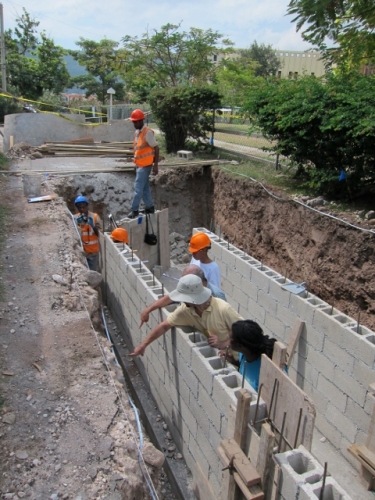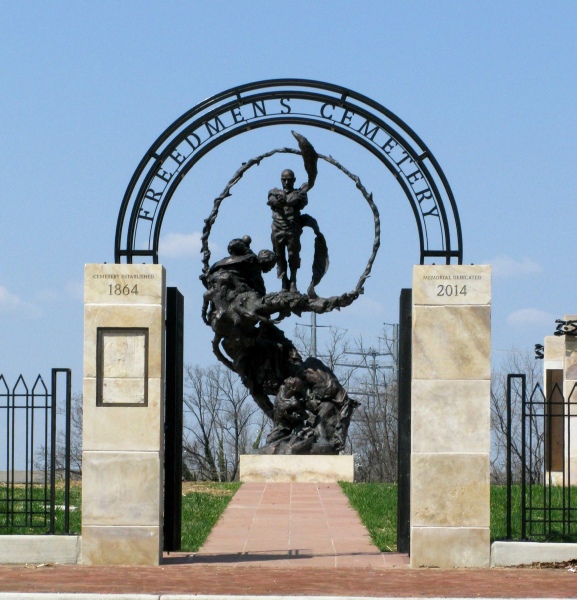
Reports in March this year that a slavery-era cemetery was discovered in the parish of St. Elizabeth in Jamaica with the grave of a Manley progenitor (the Manleys have been the leading political family in Jamaica) begs the question: Whatever happened to all those graves where the enslaved were buried?
Since at least the 18th century, Jamaica had far more black enslaved persons than any other group. Yet there are precious few known burial grounds for the enslaved. The answer is simple. Enslaved persons were interred in unmarked graves, and many of those sites remain unknown.
Matters were compounded by high mortality rates of enslaved children, whose small graves would be easily lost and missed. Kenneth Kiple in The Caribbean Slave: A Biological History, cited H. Orlando Patterson’s finding that “Jamaican slave mortality in the under four-year-old age group [was] excessive.”
It’s a pity these gravesites are unaccounted for, because they are part of the history of a people. They are a rich source of information and an eye into the past.
We occasionally get hints here and there as to the location of these cemeteries.
The most well-known enslaved burial site in Jamaica is at Seville in St. Ann, the first Spanish capital on the island. In the January 2003 edition of the International Journal of Historical Archaeology, Douglas Armstrong and Mark Fleischman wrote:
Four burials were excavated from discrete house-yard compounds in an eighteenth century African Jamaican slave settlement at Seville plantation. Though only four in number, these individuals provide significant information on burial practices and physical conditions within a clearly defined African Jamaican community. The analysis of material remains illuminate living conditions and social relations within the African Jamaican community. Each individual was interred within a separate house-yard and with a unique set of artifacts that yield information about their unique identities and positions within the Seville community.
One of the more interesting stories was connected with one of the “Spanish hotels” built a few years ago in St. Ann. The hotel experienced various setbacks, including injury and death of workmen on the construction site. Reports were that the hotel was being built on an old burial ground for slaves and the spirits were making their displeasure known. It was alleged that assistance was sought from the parish of St. Thomas to quell the spirits, and when that failed, further help was sought from Haiti. Chickens and goats were sacrificed and blood sprinkled. Whether that helped is not clear, though other incidents occurred.
Linton Gordon wrote an article in the North Coast Times that made my breath come up short:
There is, in Walkerswood, Saint Ann, a burial site where slaves were buried. The site is known as “Niggerhouse” …. During slavery, the plantation owners in Walkerswood would bury the slaves who died by whatever cause at this location…this is where the slave masters “tassed weh” the bodies of slaves.
I grew up on the Mount Plenty property in St. Ann, which had Walkerswood as its official district. On the property, in between the great house and the house where the headman’s family lived, was a large plot that everybody called Nigger House. It never occurred to us what the name referred to. None of us ever queried as to why it had the name. No one in Orange Hall, the adjoining village, as far as I’m aware, questioned it. Our lack of curiosity then boggles me now.
Based on Gordon’s reference to this Niggerhouse (that’s his spelling) in Walkerswood, it appears that this piece of ground at Mount Plenty with the same name was either the location where the enslaved lived, where they were buried, or both. I estimate it to be much too large for a burial ground. It was unlikely the owners would have given such a large piece of land just to bury slaves. Besides, the plot is strategically placed so that those at the great house, which sits on top of a hill, could easily see what was going on below. It was next to the headman’s house, likely the house of the overseer in the past, who would be in close touch with anything happening. So my guess is that it consisted mainly of dwellings with a burial spot included. It is chilling that I may have been walking over graves for those many years as a child without knowing it.
Researching slave cemeteries
The likely locations of other slave burial grounds are on estates and plantations, just like Mount Plenty and Seville. Many of these properties no longer exist as they have long been broken up and sold off. For even those still intact, current owners are likely ignorant of the existence or whereabouts of these burial grounds, and if they do, they have no incentive to preserve such locations.
Richard Dunn, in reference to the old Mesopotamia Estate in the parish of Westmoreland, said “it would take a team of archeologists many months to uncover the site of the slave village and the slave cemetery.” Yet he pointed out that there was much evidence of life and activities on the estate as records were meticulously kept, including a count of the number of enslaved persons on the estate.
A team of archeologists conducted geophysical tests at a slave cemetery at Marshall’s Pen in Mandeville. “Marshall’s Pen preserves the remnants of a slave village including house foundations, refuse pits and a cemetery,” says a joint paper by several scholars in the United States. The team sought “to determine the approximate locations of subsurface graves,” and “the parameters of the burial grounds (marked and unmarked) so that they may be studied and preserved.”
While some of the results were inconclusive, “several graves in the cemetery are covered with cut limestone blocks, others are covered by piles of uncut rock, and there may still be others that are unmarked.” The study, which included researchers from Colorado College, Pomona College in California, University of Texas-El Paso and University of Minnesota-Morris, detected evidence of water in the graves, which affected accurate readings.
A cemetery was discovered in 2012 at Mona, in St. Andrew, “on lands once associated with the Papine estate.” An article on the unexpected discovery by a construction supervisor for the University of the West Indies (UWI) showed uncertainty of the type of cemetery it was:
[W]hile the bones may belong to enslaved persons who lived and worked on the Papine estate, one also has to bear in mind that they could very well be those of free labourers who continued to live on the property in the decades following the abolition of slavery, or the occupants of the Overseer’s house, which is known to have been located close to the area of the find.
The Marshall Pen archeological tests and the discovery at Mona demonstrate how difficult it is to identify and verify burial grounds of enslaved persons, making it likely these will forever be lost to history. In the case of UWI, the 2012 discovery suggests that part of the institution, like so many others, is built over the resting place of the dead.
African American burial grounds

Similar neglect of slavery-era and post-slavery cemeteries also occur in the United States, but some efforts are being made to have these preserved. In Alexandria, Virginia, where I live, we drove past an overgrown lot for a number of years until, in 2014, we saw work being done on the site. Thinking it was a new building construction project, we were surprised, when the work was done, to learn it was a 19th century cemetery for African Americans, with the unusual name, Contrabands & Freedmen Cemetery. We see no headstones on this site, just the newly built memorial, while on the other side of the road, directly opposite, is another cemetery kept in pristine condition and populated by majestic headstones. We didn’t have to ask who was buried there.
In January this year, the New York Public Library reported on the discovery of “The Harlem Burial Ground,” a previously unknown cemetery where African Americans were likely buried centuries ago. This was in addition to another such burial ground that was found several months earlier:
Another African Burial Ground was officially “discovered” in New York City a few days ago. Over 140 bones, bone fragments and a skull were recovered last summer at the 126th Metropolitan Transportation Authority bus depot in East Harlem, and preliminary analysis announced on January 20 shows that the skull most likely belonged to a woman of African descent.
The article went on to state:
The story of the Harlem Burial Ground began in 1658 when Governor Peter Stuyvesant ordered enslaved Africans to build a nine-mile road from lower Manhattan to the city known then as Nieuw Haarlem. Seven years later the residents erected the First Reformed Low Dutch Church of Harlem (future Elmendorf Reformed Church) at First Avenue and 127th Street and a quarter acre of land was reserved for a “Negro Burying Ground.”
Free and enslaved African Americans were buried there through the mid-19th century; however, in 1853, the land was offered to the highest bidder and sold for $3,000. A casino, and later film studios, were erected on the site before it was ceded to the MTA.
In “Black Deaths Matter,” an October 2015 article in The Nation magazine, Seth Freed Wessler pointed out that Jim Crow laws in the US affected not just the living, but the dead as well. Not only were there enforced racial boundaries in towns and cities between black and white residents, there were enforced boundaries between the dead. Even though Jim Crow is supposedly dead, African American cemeteries, both those used during and after slavery are, for the most part, in bad condition due to a differential in resources to preserve these burial sites. In many parts of the US, “the white one (cemetery) is in fine shape—the black one is not,” a concerned African American told Wessler. This is primarily because “memorials to white lives are left in trust, padded with private and public wealth [while] collective memorials to black lives fall into the red financially and slip from view.”
It is similarly so in Jamaica with regard to the graves of the enslaved. They were never meant to be a memorial in the first instance, and so it has remained.
Very interesting.